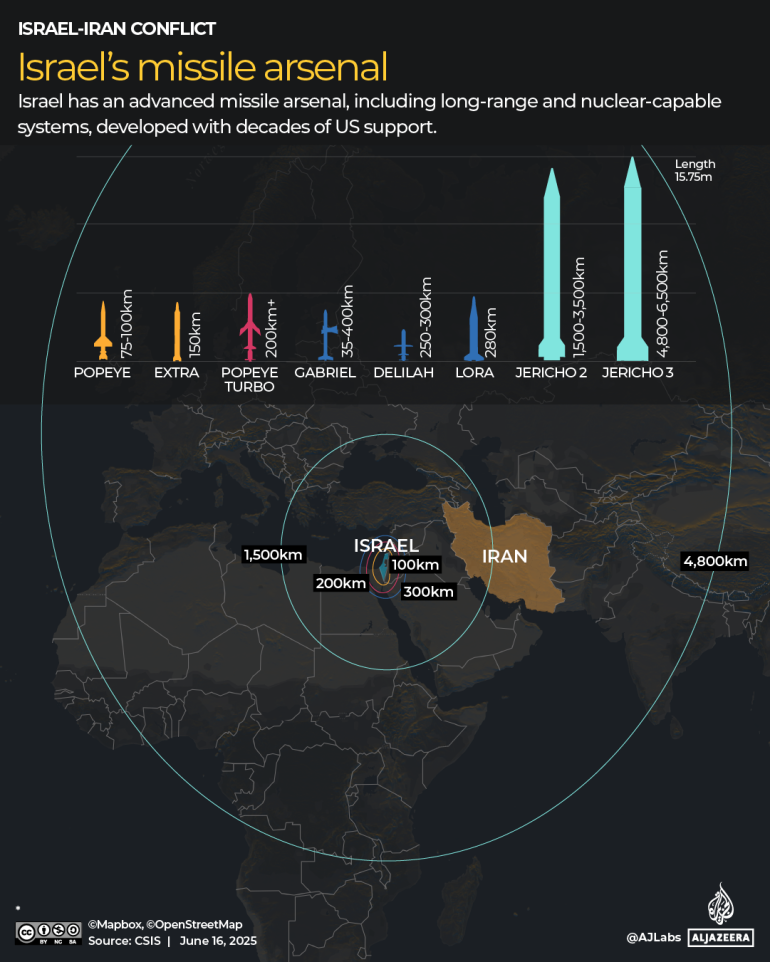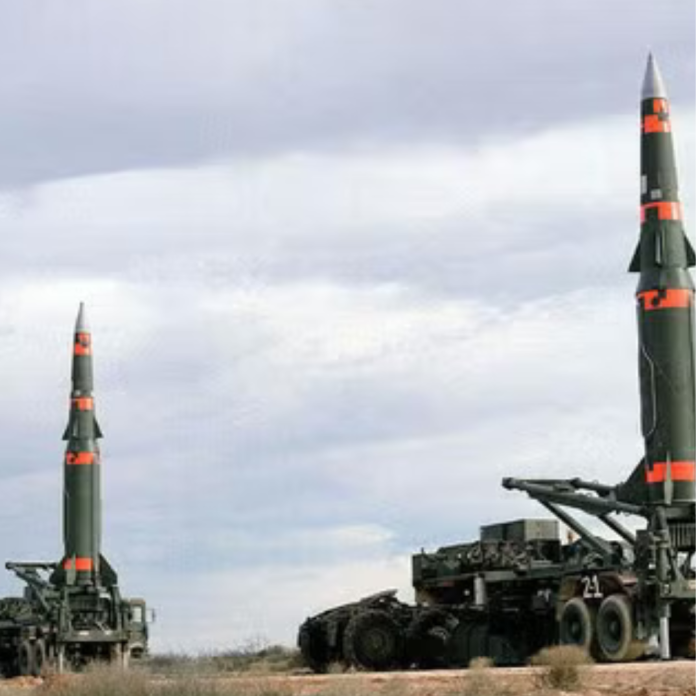Ballistic missiles are powerful long-range weapons designed to deliver conventional or nuclear warheads over vast distances. They follow a high, curved trajectory—launching into the upper atmosphere or even space before descending at incredible speeds to strike their targets.
In recent developments, Iran has launched hundreds of ballistic missiles toward Israel in retaliation for Israeli strikes on its nuclear facilities and senior military personnel. While Israel’s defence systems intercepted many of them, several missiles broke through, causing damage and casualties in areas including central Tel Aviv.
Iran’s exact missile stockpile remains uncertain, but experts agree it is one of the largest and most sophisticated arsenals in the Middle East.
In this explainer, we unpack how ballistic missiles function, how far they can travel, and why they are central to the ongoing conflict.
How Do Ballistic Missiles Work?

Ballistic missiles are launched using powerful rocket engines that propel them high into the atmosphere—sometimes even reaching space. Once the engine burns out, the missile follows a predetermined arc, re-entering Earth’s atmosphere at high speed before hitting its target. Their flight path resembles the arc of a ball thrown into the air—hence the term “ballistic.”
How Far Can They Travel?
Ballistic missiles vary widely in range:
- Battlefield Range (BRBM): Under 200 km (124 miles)
- Short-Range (SRBM): Up to 1,000 km (621 miles)
- Medium/Intermediate-Range (MRBM/IRBM): 1,000–3,500 km (621–2,175 miles)
- Long-Range (LRBM): 3,500–5,500 km (2,175–3,418 miles)
- Intercontinental (ICBM): Over 5,500 km (3,418 miles)
Some modern ballistic missiles can reach targets across continents, making them a strategic threat globally.
How Fast Are They?
Ballistic missiles are incredibly fast, often travelling at speeds measured in Mach (where Mach 1 equals the speed of sound):
- Supersonic Missiles: Over Mach 1 (1,225 km/h or 761 mph)
- Hypersonic Missiles: Over Mach 5 (6,125 km/h or 3,806 mph)
Such speeds allow them to reach distant targets in mere minutes.
How Long Would It Take Iran’s Missiles to Reach Israel?
The distance between Iran and Israel is roughly 1,300 to 1,500 km (800–930 miles). A ballistic missile travelling at Mach 5 could cover that distance in about 12 minutes—though the exact time depends on the missile’s speed and point of origin.
Why Are They So Hard to Intercept?
Ballistic missiles are difficult to defend against due to:
- High Altitudes and Speeds: They give defence systems little reaction time.
- Steep Re-Entry: Their descent is rapid and hard to track.
- Decoys and Countermeasures: Some missiles release fake targets to confuse interceptors.
This combination makes them a major challenge for even the most advanced air defence systems.
Ballistic vs Cruise Missiles: What’s the Difference?
Iran has also used cruise missiles, which differ significantly:
- Cruise Missiles fly at low altitudes like pilotless aircraft.
- They are slower than ballistic missiles but harder to detect due to their low, terrain-following flight path.
- They can manoeuvre mid-flight, making them more evasive.
While a ballistic missile from Iran can hit Israel in 12 minutes, a cruise missile might take up to two hours, and some drones could take up to nine hours.
Iran’s Missile Arsenal
Iran has built a wide range of ballistic and cruise missiles over the past 30 years, including:
- Shahab Series (SRBM/MRBM)
- Emad and Khorramshahr (IRBM)
- Soumar (Cruise missile)
These missiles vary in range, payload, and sophistication.
Israel’s Missile Arsenal

Israel maintains a highly advanced missile program, with support from the United States. Its arsenal includes:
- Jericho III (ICBM, reportedly nuclear-capable)
- Delilah (Cruise missile)
- LORA (Tactical ballistic missile)
These systems serve both defensive and strategic purposes.
What Are Israel’s Air Defence Systems?
Israel’s multilayered air defence includes:
- Iron Dome: Targets short-range rockets and missiles; highly effective in urban areas.
- David’s Sling: Covers medium-range threats (40–300 km).
- Arrow System: Designed to intercept long-range ballistic missiles (up to 2,400 km).
Despite their sophistication, these systems can be overwhelmed by large-scale barrages or high-speed projectiles.

As the Israel-Iran conflict escalates, ballistic missiles are not just tools of war—they’re defining the pace and shape of modern warfare in the region.
By Aljazeera



